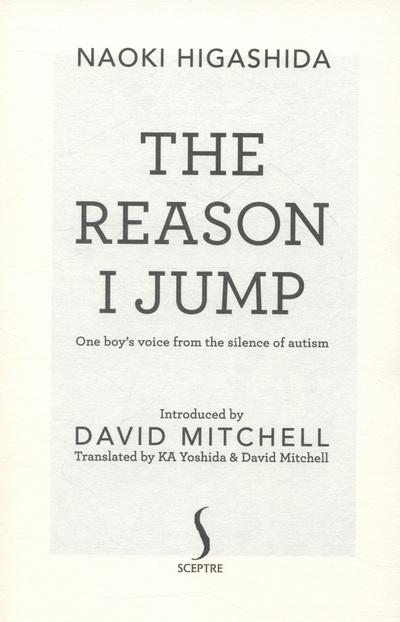
Mitchell himself invites the reader to feel humbled by Higashida – as the translator has been humbled – by being given a real understanding of how the autistic person really is, with an inner which may be even more vastly dissimilar from what the outsider SEES, than most of our structured `masks’ of who we ‘normals’ are, have dissimilarity from the inner core and rich complexity of each of ‘us’.

What Mitchell’s foreword also reveals, again with the empathetic, compassionate humanity which is a hallmark of his writing, is that there is a back-story to this translation by Yoshida and Mitchell – they are the parents of an boy with autism. And yes, I found it bewildering and terrifying, which is rather the point Mitchell wants us to realise, before Naoki Higashida eloquently explains the rich, profound, tender complexity of his interior world. I came to this book because I am a great admirer of David Mitchell’s writing, and thought initially this was a book BY Mitchell, before discovering it is a book translated by Mitchell and his wife, Keiko Yoshida, and with a foreword by Mitchell, in which, with typical intensity and precision, he guides the reader into an imaginative exercise to try to help us make the jump into an inside experience of autism. His focus is to explain autism from the inside, in order to let the rest of us – and presumably, most of all – those who have a child with autism, a sibling with autism, who teach children with autism – understand the supreme mismatch between what those of us who are not autistic see and mis-interpret and what people with autism feel.



Using a complicated (to my eyes) grid with Japanese characters he pointed to each one in order to indicate what he wanted to write. Naoki Higashida was 13 when he wrote this book, a young Japanese boy with autism.


 0 kommentar(er)
0 kommentar(er)
